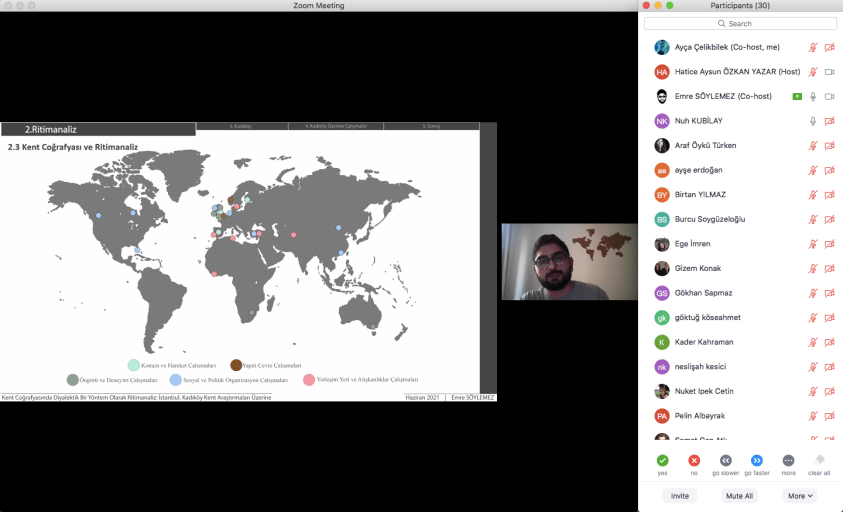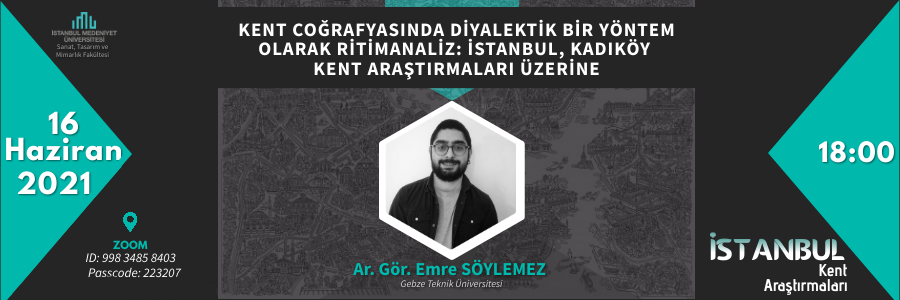The 10th seminar of the “Istanbul Urban Studies” seminar series organized by the Department of Urban and Regional Planning of Istanbul Medeniyet University moderated by our Urban and Regional Planning Department member Res.Asst. H. Aysun ÖZKAN YAZAR was held online on Thursday, 16th June 2021, with a presentation by Res.Asst. Emre SÖYLEMEZ from Gebze Technical University. SÖYLEMEZ delivered a presentation titled “Kent Coğrafyasında Diyalektik Bir Yöntem Olarak Ritimanaliz: İstanbul, Kadıköy Kent Araştırmaları Üzerine” (Rhythmalysis as a Dialectical Method in Urban Landscape: On Urban Studies on Kadiköy, Istanbul).
SÖYLEMEZ started his presentation by explaining the roots and history of the concepts of rhythm and rhythmanalysis in the literature. The researcher said that rhythmanalysis which regards city life as a process reading urban dynamics and was brought up by Santos and Lefebvre for the first time is an alternative way to understand the complexness of the city and provide some perspective about it. He also added that the rhythmyanaylsis method creates a great advantage for urban studies and is a comprehensive method to understand urbanization process because of its multidimensional approach as it involves the concepts of society and space besides time.
SÖYLEMEZ mentioned that he had chosen Istanbul for the study although the city has a compelling and complex nature because it offers richer options to observe the reflections of societal qualifications on urban space. Using Kadıköy as case area, SÖYLEMEZ reviewed several academic studies about the district focusing on the concept of transformation. He evaluated the selected studies with the perspective of rhythmanalysis and defined their aims, contents, methods, and importance. He examined the approaches and methods of ten academic studies grouped under five categories according to their capacity to consider the three dimensions of time-space-society. He discussed the method used to assess the three dimensions (time- space- society) in studies and evaluated their strengths and weaknesses. He stated that qualitative and quantitative methods are not efficient enough to make a comprehensive study when they are used separately. While pure quantitative methods miss the togetherness and inclusiveness of these three dimensions, pure qualitative methods also are far from being explanatory without numeric data. However, the studies that use both methods could still be lacking in all three dimensions although they can reach the aim of rhythmanalysis method. The researcher pointed at the possible contributions of rhythmanalysis method for future planning studies. He stressed the need for research that assess a combination of these three methods for more sustainable cities and societies.
In the following q/a session, SÖYLEMEZ referred to the challenging parts and limitations of his study. He also mentioned the existence of case studies contextualizing the triad of time-space-society successfully in response to questions.


